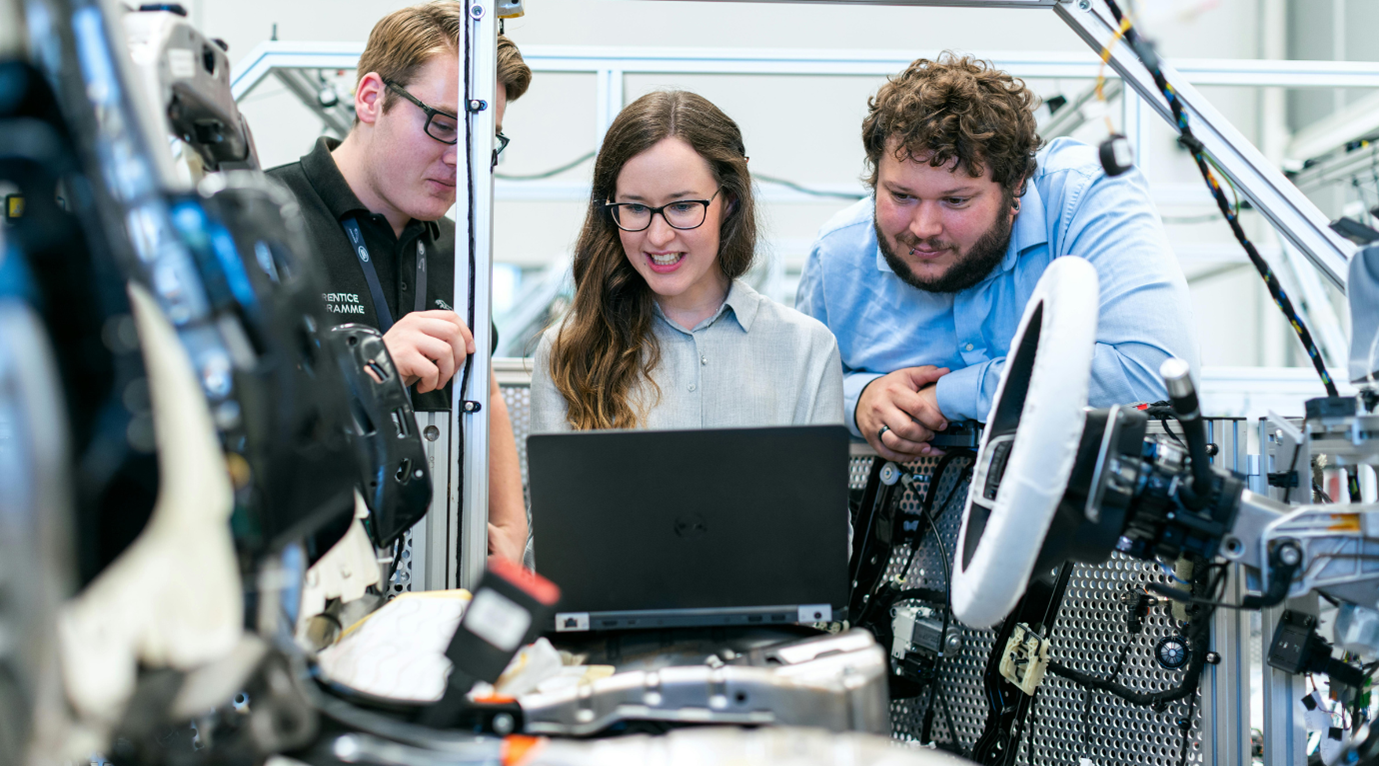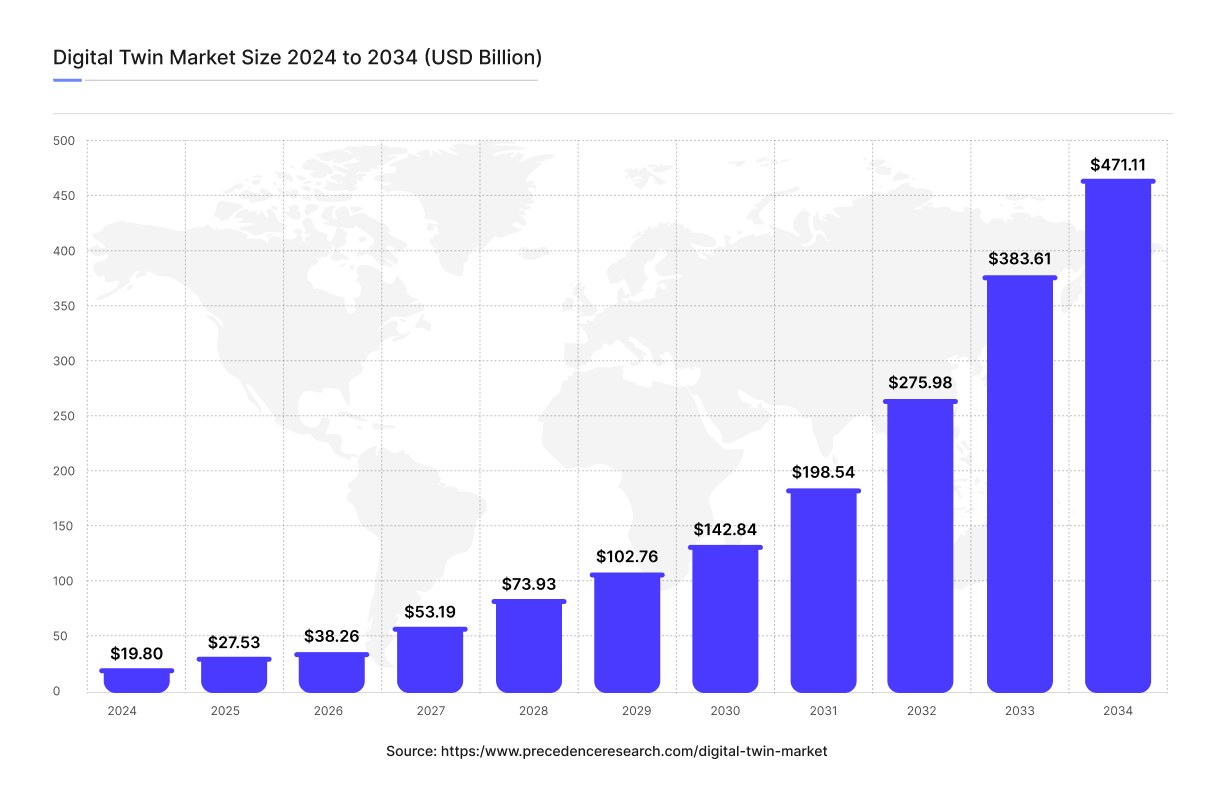
The remarkable growth of the automotive industry in the past few decades has been credited to mass production, lien adoption and globalization. However, with the growth of information technology, data has become the new oil.
With Industry 4.0 taking shape, the future of the automotive industry is supposed to be led by data-based manufacturing. The automotive industry is striving to meet the customers demands for their vehicles to have maximized efficiency, performance and a longer lifetime. The automotive industry has faced multiple challenges throughout its existence, ranging from expensive production to prolonged development cycles to market fluctuations.
Data-driven manufacturing is necessary for the automotive industry to be a good fit for the future. Key to this next phase of growth will be the concept of digital twins. John Wicker from NASA was the first one to introduce a road map for implementation of the digital twin technology.
Digital twin Is a recreation or a simulation of the real world. The global market for digital twin Was accounted at USD 27.53 billion in 2025 and is well forecasted to reach around USD 471.11 billion by 2034 with a compounded annual growth rate of whooping 37.29% from 2025 to 2024. With this phenomenal growth projections, let’s discuss In this article, The significance of digital twin technology for automotive industry.

A digital twin technology is composed of three elements – The physical entity, which is the real world, the virtual models and the connected view, the ties to worlds together. In the automobile industry, the product life cycle of the vehicle involves various stages from conceptualization to design, procurement, building stocks, selling, service, and recycling. At each stage, an enormous amount of data is generated. As part of the routine activities, leveraging this data for a faster and cost-effective manufacturing.

The journey of manufacturing a single car is often very long. It takes almost five to six years to produce a single car from design stage to the manufacturing stage. Many prototypes that arrive after five to six years of design, tests and manufacturing are often not approved. Digital twin technology can create a replica of the product and help designers and engineers to simulate and optimize the prototype for various scenarios before committing to a physical prototype, which are very costly.

Digital twin technology can be used to revolutionize the automotive industry to improve product design, manufacturing and maintenance. Digital twins are virtual replicas of physical assets that use real-world to stimulate performance. Let’s discuss the use cases:
In this use case, virtual models are created to test several different materials before building physical prototypes.
After training on a good set of data it can be forecasted when the components might fail and need maintenance so the maintenance can be scheduled before hand.
Trends and patterns can be identified from the existing data. And efficiency in the production process could be Increased After plugging the bottlenecks.
Supply chains can be optimized after plugging in the bottlenecks. The bottlenecks can be identified by looking at the data collected over a particular set of time.
Vehicle testing can be automated by defining a particular set of parameters, such tests can be carried out in virtual environments.
Digital twin technology can create virtual environments for training and safety to run simulations can help the industry enhance safety standards.
Digital twin technology can ensure better quality control by testing the product several times in virtual environments created by digital twin technology. This will greatly improve quality and performance.
Digital Twin technology has several benefits for revolutionizing the safety standards in automobile industry but these benefits are not without many challenges, let’s discuss few of them:
The foremost challenge to industry wide adoption of digital twin technology in high cost. Adopting digital twin technology requires significant financial investment into acquiring specialized hardware, software and experts.
The cost of implementing or adopting digital twin technology differs from project to project based on it’s complexity. A particular subsystem of a vehicle manufacturing process may require less investment but manufacturing a whole vehicle from design to the end product will require a lot of investment.
a. Accuracy of Data and it’s Quality: The efficiency or quality of digital twin is completely based upon the quality of the data. However, collecting data for digital twin technology ecosystem is a big challenge, gathering data from multiple sources and integrating them together In a proper manner is often a challenging task.
Digital twin with inaccurate, insufficient, or bad quality data may not be able to represent the vehicle. And it may ultimately affect its operational and maintenance activities. A good quality data set is essential for bringing an entire system’s performance to par with expectations with digital twin technology.
b. Scalability: Scalability might not be an issue when you’re working on a particular subsystem of a vehicle, but if a vehicle is to be manufactured completely from scratch, scalability may become a problem. The sheer volume of data that will need to be processed for a whole vehicle to be constructed is a lot, and it can easily become overwhelming. as the data increases in volume and the You know, problem becomes complex. Significant computational resources, which are difficult to scale up may be required. The question now is, Is the industry ready to take on such a challenge?
Data is the new oil of the century, and the world is getting more sensitive about data, rightfully so. Digital twin technology includes sensors, IoT trackers, etc. And these components have sensitive data. Such as trade secrets, personal data of customers, and proprietary data. It is essential to protect this data from falling into unauthorized wrong hands. Companies must follow strong security and data protection methods like encryption, access controls, and firewalls to avoid data leakages and misuse.
Automobile manufacturing companies manufacture vehicles in bulk, so it is an obvious reality that a huge amount of data would need to be processed every now and then. More digital twin models. To successfully compute this data and process it in real time, a huge computational capacity would be needed. Investing in high performance computing resources is very expensive and this limits scalability.
In this section, we will discuss the possible future trends in the automobile industry:
Neuronimbus can help the automotive industry leverage Digital Twin Technology through its expertise in product development, digital transformation, and cloud engineering.
Being a leading automotive software development company, Neuronimbus enables automakers to design and test virtual vehicle models efficiently. Their business process optimization and data engineering services streamline manufacturing and enhance predictive maintenance. We ensures secure and scalable digital twin adoption, driving efficiency, reducing costs, and optimizing the automotive manufacturing lifecycle.
Let Neuronimbus chart your course to a higher growth trajectory. Drop us a line, we'll get the conversation started.
Your Next Big Idea or Transforming Your Brand Digitally
Let’s talk about how we can make it happen.